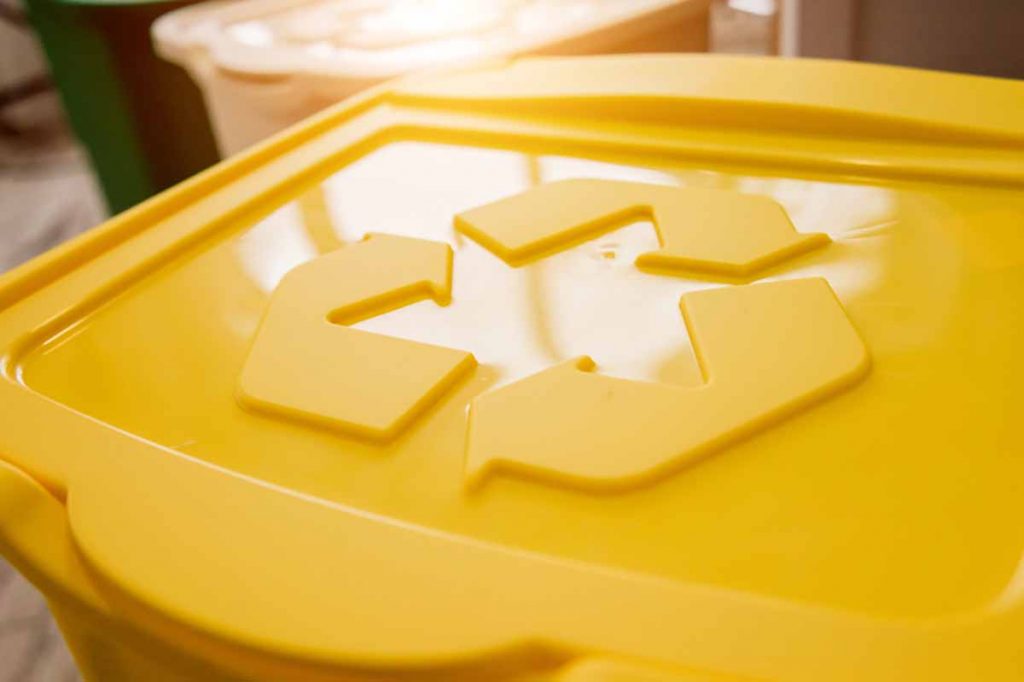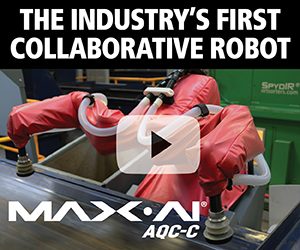
The authors discuss strategies for eliminating “free riders” in this final installment of a four-part series on best practices for EPR systems. | Roman Zaiets/Shutterstock
This is the last installment in a four-part series of articles on the key considerations for implementing extended producer responsibility systems (frameworks in which product producers fund or manage the end-of-life needs of the goods they put on the market). In the U.S. and elsewhere, EPR is gaining momentum as a strategy to ensure proper recovery and management of packaging, and debate on the topic is expected in several U.S. states and Canadian in 2021.
Our previous stories focused on the diversity of producer responsibility models, and, based on Canada’s experience, what should be considered when establishing these types of policies. In this last article, we concentrate on the last piece of the EPR policy puzzle: proper oversight, compliance and enforcement to ensure a law meets its goals.
Oversight, compliance and enforcement are important in any regulatory regime as they help to ensure a fair and level playing field is established and that environmental protection, market fairness, competition and other objectives are met.
The ride is not free
A handful of issues are key when it comes to EPR compliance.
First is the reality of “free riders,” or companies avoiding their obligations under producer responsibility frameworks. This is a growing concern, especially with the growth of online sales. Free-riding can generally occur in three ways:
- A company does not register and report and therefore do not contribute to costs;
- A company registers but under-reports and therefore does not pay its proportionate share of costs.
- A company is not obliged to register because of a loophole in the legislation.
In all cases, the result is an unlevel playing field, where producers that are compliant bear higher costs and increased risks. It may also impact the wider program’s ability to secure economies-of-scale.
Governments are often criticized as negligent in devoting proper resources toward enforcement.
A 2017 report completed for the British Columbia Ministry of Environment indicated that 27% to 45% of the volume of designated printed paper and packaging supplied to residents in British Columbia is associated with companies that are either non-compliant or too small to be required to help fund the system.
Meanwhile, in Quebec, it is not mandatory for producers that do not have a place of business in the province to register, but a “first supplier” (a wholesaler, for instance) does need to be part of the program.
However, when it comes to e-commerce companies that do not have an establishment in Quebec and sell directly to consumers, there is no “first supplier” – thus, no entity is registered for the product these e-commerce businesses place on the market. It has been estimated that 5% of all packaging and printed paper sold in the province comes from those companies.
Typically, producer responsibility organizations identify free-riding producers while the regulator, usually government, is responsible for taking enforcement action. In some provinces, however, the enforcement task (mediation and litigation) is led by the producer responsibility organization itself. Governments are often criticized as negligent in devoting proper resources toward enforcement.
In those situations where producer responsibility organizations take on a role in identifying free riders and/or leading enforcement action, the associated cost burden is passed on to their members and undertaking this role detracts from their primary role of operating the program.
Keeping playing field level
The next key area of compliance consideration is competition that may arise between producers or producer responsibility organizations.
Without proper compliance and enforcement, there is an opportunity for different actors to gain a competitive advantage through some form of non-compliance. Examples of this include under-reporting of designated materials supplied into the market, over-reporting of materials collected and processed, and substandard auditing processes and protocols.
This scenario also applies to waste management service providers who are not held to a common set of standards, such as minimal recovery rates or other environmental performance standards. As noted by the Canadian Stewardship Services Alliance, a level playing field is necessary to ensure that all obligated producers, program operators and service providers are compliant with the regulatory requirements.
Regulators must be prepared to take appropriate enforcement action and have adequate compliance resources, which includes proper staffing. The objective of creating a level playing field can easily be undermined when resources are not focused and dedicated, as is often the case for governments.
Know your policy terminology
Oversight: Monitoring of activities to assess compliance with the regulatory requirements established.
Compliance: Conformity with regulatory requirements, including, but not limited to, legislative provisions, regulations, rules, standards and orders.
Enforcement: Actions taken to induce, encourage, or compel compliance with regulatory requirements.
What are the consequences?
The next key area of focus can be termed “rule of law.” This area centers on a basic question: Are there consequences if policy rules are broken?
Waste management service providers have commonly made criticisms about this element of the compliance side of various types of policy interventions.
In short, companies will be hesitant to invest in new collection or processing infrastructure if there are not clear repercussions for actors that engage in the following types of activities: failing to meet established targets, disposing most of the materials collected instead of recycling, or coming up short of environmental performance standards.
When there is assurance of a rule of law, it provides greater market confidence allowing for investment and innovation. It also helps to build public confidence.
This sense of public support in material diversion is growing in importance. There has been significant global media coverage of instances when collected materials (particularly plastics and waste electrical and electronic equipment) were not being managed properly at the end-of-life. There has also been growing public narrative about a lack of progress in increasing diversion.
If the policy framework clearly emphasizes the rule of law and shows there are consequences for infractions, wider trust in the initiative will result.
Steps to reliable regulation
It is generally in the interests of all stakeholders that a proper oversight, compliance and enforcement regime be in place to address the issues raised above. Yet compliance tends to be one of the most hotly debated areas within producer responsibility policies.
Stakeholders worry about new requirements and costs, a lack of harmonization across jurisdictions, and the possibility of unreasonable regulators. All of these concerns are legitimate.
There should be a move towards greater collaboration between jurisdictions, which may happen in Canada as a result of federal government’s commitments made through the Ocean Plastics Charter. This type of collaboration could also be helpful with state governments in the U.S.
The goal should be to ensure regulatory efficiency while delivering effectiveness (meeting outcomes with the least administrative burden) for producer responsibility regulations. To achieve an ideal framework, several strategies are recommended.
First, the regulator should have adequate resources, both financial and human, to do its job effectively. There will always be discussions on what is considered adequate, so there must be a means to ensure transparency in how budgets are set, clarity in the established role of the regulator, and an ability to audit the regulator. If the regime is funded through taxpayer dollars, the concern will always exist that the regime will be underfunded. As a result, a fee-per-service model is seen as preferable.
Stakeholders worry about new requirements and costs, a lack of harmonization across jurisdictions, and the possibility of unreasonable regulators. All of these concerns are legitimate.
Second, a range of progressive compliance tools should be in place, allowing for graduated and proportionate enforcement (examples include proactive communications, inspections and audits, compliance orders, administrative penalties, and prosecution). Modern regulatory regimes promote a compliance-focused (as opposed to an enforcement-focused) approach that is risk-based. This means the regulator needs to understand and assess the potential risks related to non-compliance – both the likelihood of occurrence as well as the potential impact of non-compliance. The regulator should ensure the most efficient and effective compliance mechanism to achieve desired outcomes, such as reducing barriers to compliance, increasing knowledge and understanding of compliance expectations, and supporting the regulated community’s compliance through available resources.
Next, regulators should have the ability to provide direct oversight throughout the supply chain to ensure they have a complete understanding of the market. In Canada, many regulators do not have direct access to producer-supplied data or specific service provider data. Instead, the data is consolidated in an annual report that is often independently audited. As the data is consolidated, it can be difficult to assess compliance (for example, if producers were misreporting).
Finally, regulations need to be sufficiently clear and prescriptive to prevent fraudulent activities or problematic errors.This includes properly defining rules and obligations for e-commerce in order to ensure companies in that realm are responsible.
The end goal: strong public policy
Producer responsibility policies are a growing global trend to address the issues with the significant amount of waste we are generating. In addition to obliging producers to assume responsibility for their products end-of-life, the approach also provides producers with better tools to fulfil their environmental commitments.
As shown in this series, there is a lot to consider and it all comes down to what the policy aims to achieve, and the current jurisdictional context. As both Canadian and American jurisdictions move toward implementing or updating producer responsibility policies, it is important to understand the benefits and potential concerns of each approach.
Ultimately, the objective is achieving good public policy, not simply achieving producer responsibility at any cost. Though we still have much still to learn, we also have lots of established systems that have shown us what tends to work best. We’d be wise to deeply consider these lessons when designing the policies of the future.
Pierre Benabidès is from Lichens Recyclability, Sara-Emmanuelle Dubois is from NovAxia Inc. and Peter Hargreave is from Policy Integrity Inc.
The views and opinions expressed are those of the author and do not imply endorsement by Resource Recycling, Inc. If you have a subject you wish to cover in an op-ed, please send a short proposal to [email protected] for consideration.
More stories about EPR/stewardship
- Canadian PROs join forces to align design guidance
- Diversion Dynamics: Policy needed to reach full charge for vape recycling
- CAA, Recology open first drop-off hard-to-recycle site



